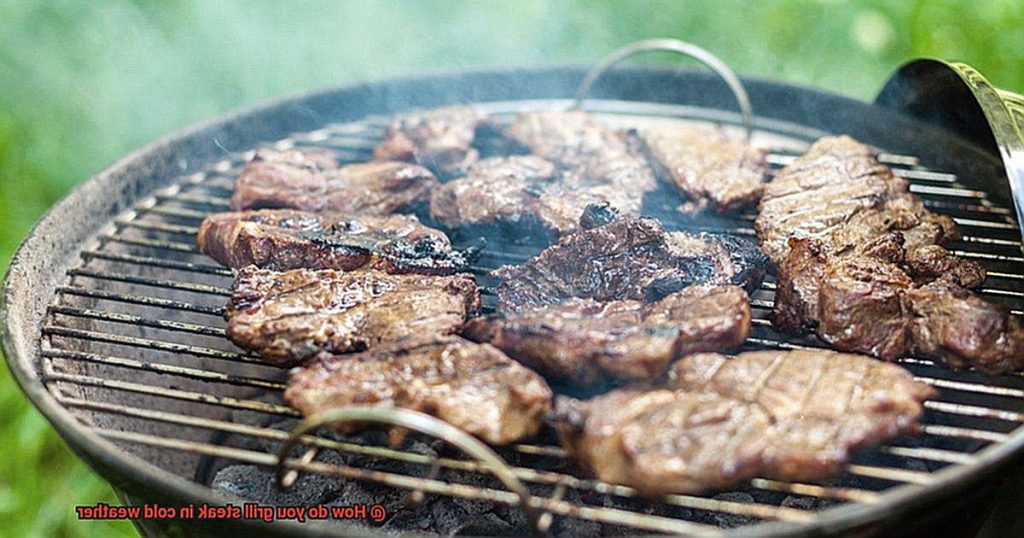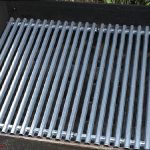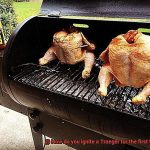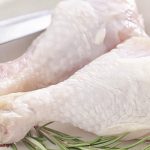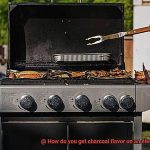Winter is here, and it’s time to fire up the grill for some mouth-watering steak. But let’s be honest, grilling in cold weather can be a daunting task that requires extra effort and safety measures. However, if you’re willing to brave the elements, we’ve got your back.
In this post, we’ll share some essential tips and tricks on how to grill steak in cold weather like a pro. We’ll cover everything from choosing the right type of grill to keeping it hot in frigid temperatures. Whether you’re an experienced griller or a beginner, these tips will help you cook your steak to perfection and keep you warm while doing so.
So bundle up, grab your tongs, and let’s get started. From avoiding common pitfalls to mastering the art of temperature control, we’ve got all the information you need to make your winter grilling experience unforgettable. Get ready to impress your friends and family with perfectly grilled steaks even in sub-zero temperatures.
Contents
Preheat Your Grill
As the temperature starts to drop, the thought of grilling outdoors may seem daunting, but fear not. With the right techniques and equipment, you can grill a perfect steak even in cold weather. One of the most critical steps in grilling steak is preheating your grill. Preheating your grill ensures that it reaches the desired temperature and maintains an even heat throughout the cooking process.
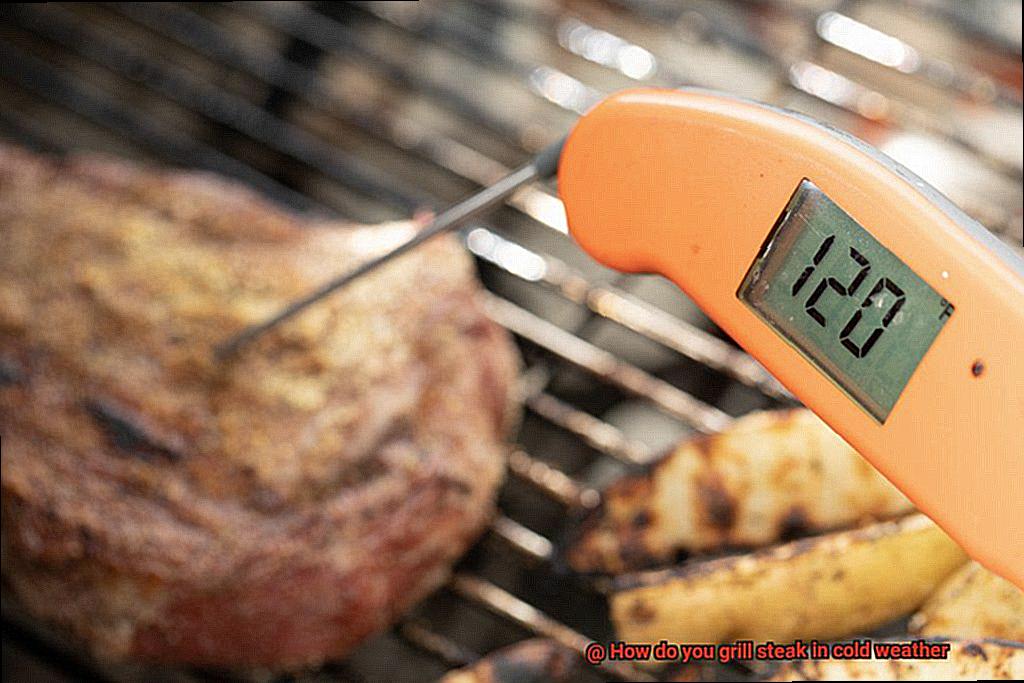
To preheat your grill, start early to avoid losing valuable cooking time waiting for the grill to heat up. Before turning on the grill, ensure that it is clean and free of debris by using a wire brush to scrub the grates and remove any leftover food particles. This step is crucial in preventing unwanted flavors from transferring to your steak.
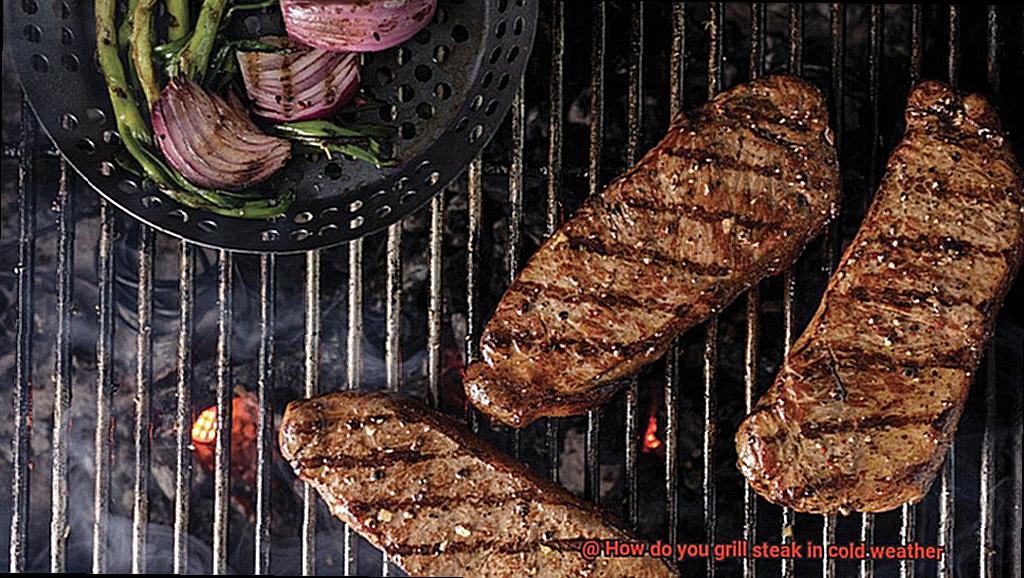
Once your grill is clean, turn it on to high heat and close the lid. Allow the grill to preheat for at least 10-15 minutes or until it reaches the desired temperature. The temperature will depend on the type of steak you are cooking and how well done you like it. For a rare steak, preheat your grill to 450-500°F. For a medium-rare steak, preheat your grill to 400-450°F. For a medium steak, preheat your grill to 350-400°F. And for a well-done steak, preheat your grill to 325-350°F.
In cold weather, using a high-quality meat thermometer is also essential because the temperature of the grill may fluctuate, making it challenging to determine the doneness of your steak accurately. Keeping the lid of your grill closed as much as possible will help maintain a steady temperature inside the grill, ensuring that your steak cooks evenly and retains its natural juices.
Finally, after removing your perfectly cooked steak from the grill, let it rest for a few minutes before serving. Resting allows the juices to redistribute throughout the meat, resulting in a tender and juicy steak.
Use a High-Quality Meat Thermometer
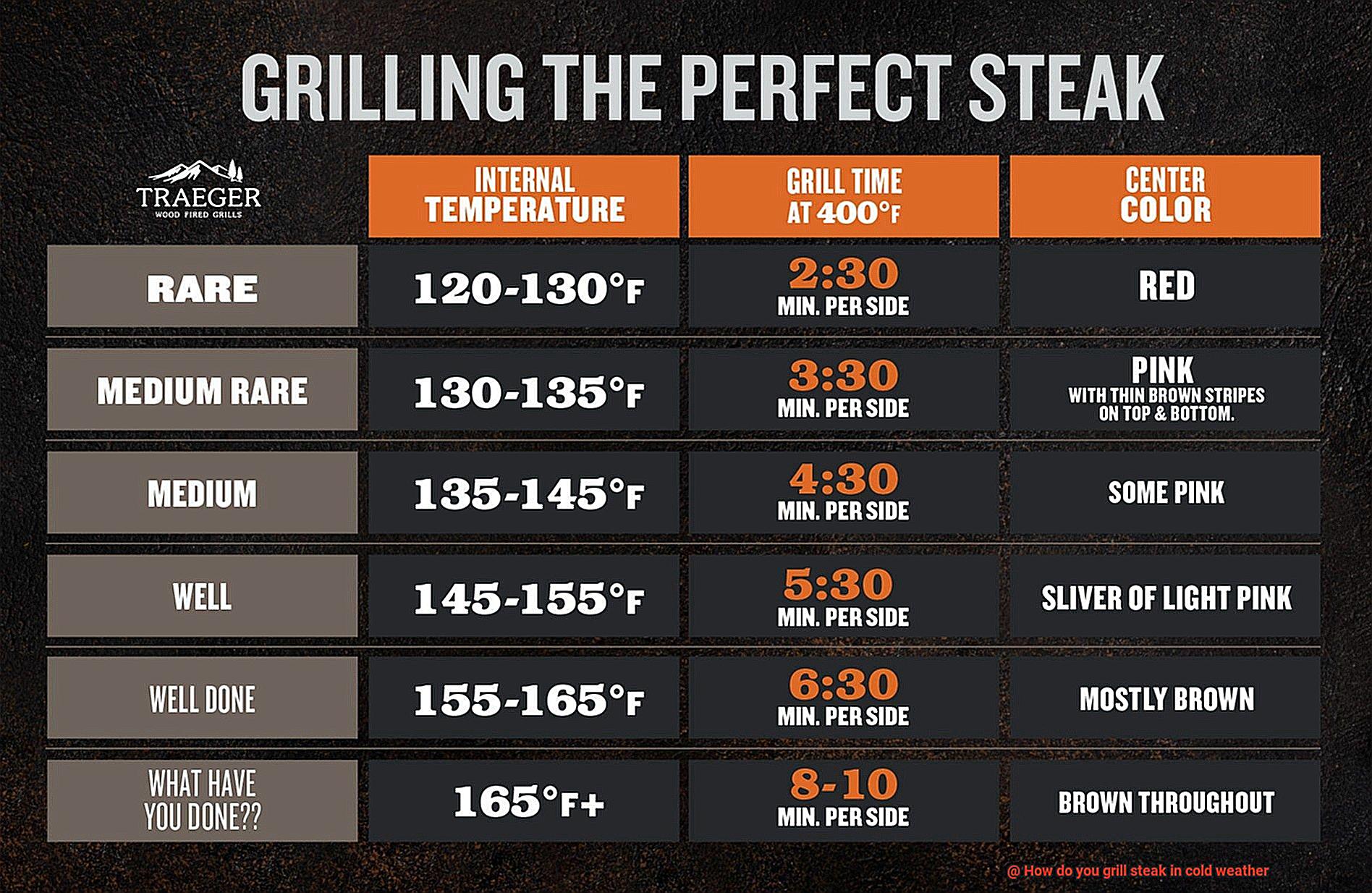
When it comes to grilling steak in cold weather, using a high-quality meat thermometer is an absolute must. The frigid temperatures can make it difficult to determine the internal temperature of your steak, but a meat thermometer will take the guesswork out of the equation.
There are several types of meat thermometers available, but digital thermometers are the most popular because they’re easy to use and provide instant readings. However, it’s crucial to invest in a high-quality thermometer that’s reliable and accurate. This will ensure that your steak is cooked to perfection every time, without overcooking or undercooking.
To achieve that perfect level of doneness, it’s important to know the optimal temperature for each level. For rare steak, the internal temperature should be 125°F; medium-rare should be 130-135°F; medium should be 135-145°F; medium-well should be 145-155°F; and well-done should be 155°F and above. Keep in mind that these temperatures may vary depending on the thickness of the steak.
To ensure that your steak is evenly cooked, take its temperature at multiple points on each side. Avoid hitting any bones or fat pockets as this can give you an inaccurate reading. Once you’ve reached the desired temperature, remove the steak from the grill and let it rest for a few minutes before cutting into it. This will allow the juices to redistribute throughout the meat.
Using a high-quality meat thermometer has several benefits when grilling in cold weather. Here are some reasons why investing in one is essential:
It saves time: Grilling in cold weather can be a hassle, but using a meat thermometer allows you to cook your steak quickly and efficiently. You won’t have to spend more time than necessary outside in the frigid temperatures.
It’s cost-effective: Investing in a reliable and accurate meat thermometer may seem like an extra expense initially, but it will save you money in the long run. You won’t have to worry about overcooking or undercooking your steak, which means you won’t have to waste money on ruined meat.
It ensures perfect results: A high-quality meat thermometer is your key to consistently perfect results every time you grill. You’ll never have to wonder if your steak is cooked to the right temperature again.
Keep the Grill Lid Closed
Grilling steak in cold weather can seem daunting, but fear not. With a few simple techniques, you can still achieve a mouth-watering and perfectly cooked steak. One of the most important things to keep in mind is to keep the grill lid closed. Let’s take a closer look at why this is so crucial.
Firstly, keeping the grill lid closed helps to maintain a consistent temperature inside the grill. When it’s cold outside, it’s all too easy for the heat to escape from the grill if the lid is left open. This can cause temperature fluctuations, resulting in uneven cooking and longer cooking times. By keeping the lid closed, you’re trapping the heat inside the grill, creating a warm and consistent environment for your steak to cook in.
Not only does keeping the lid closed help with temperature control, but it also helps to retain moisture in your steak. In cold weather, the air tends to be drier, which can lead to dry and tough steak if not cooked properly. By keeping the lid closed, any moisture that is released from your steak during cooking will be trapped inside, resulting in a juicy and tender final product.
But how do you resist the temptation to check on your steak too often? One solution is to use a meat thermometer. This nifty tool allows you to monitor the internal temperature of your steak without having to open the grill lid. Once you’ve reached your desired temperature, you can remove your steak from the grill without any unnecessary interruptions to the cooking process.
To summarize, here are some key benefits of keeping your grill lid closed when grilling steak in cold weather:
- Maintains a consistent temperature inside the grill
- Retains moisture in your steak
- Prevents temperature fluctuations and uneven cooking
- Helps achieve a juicy and tender final product
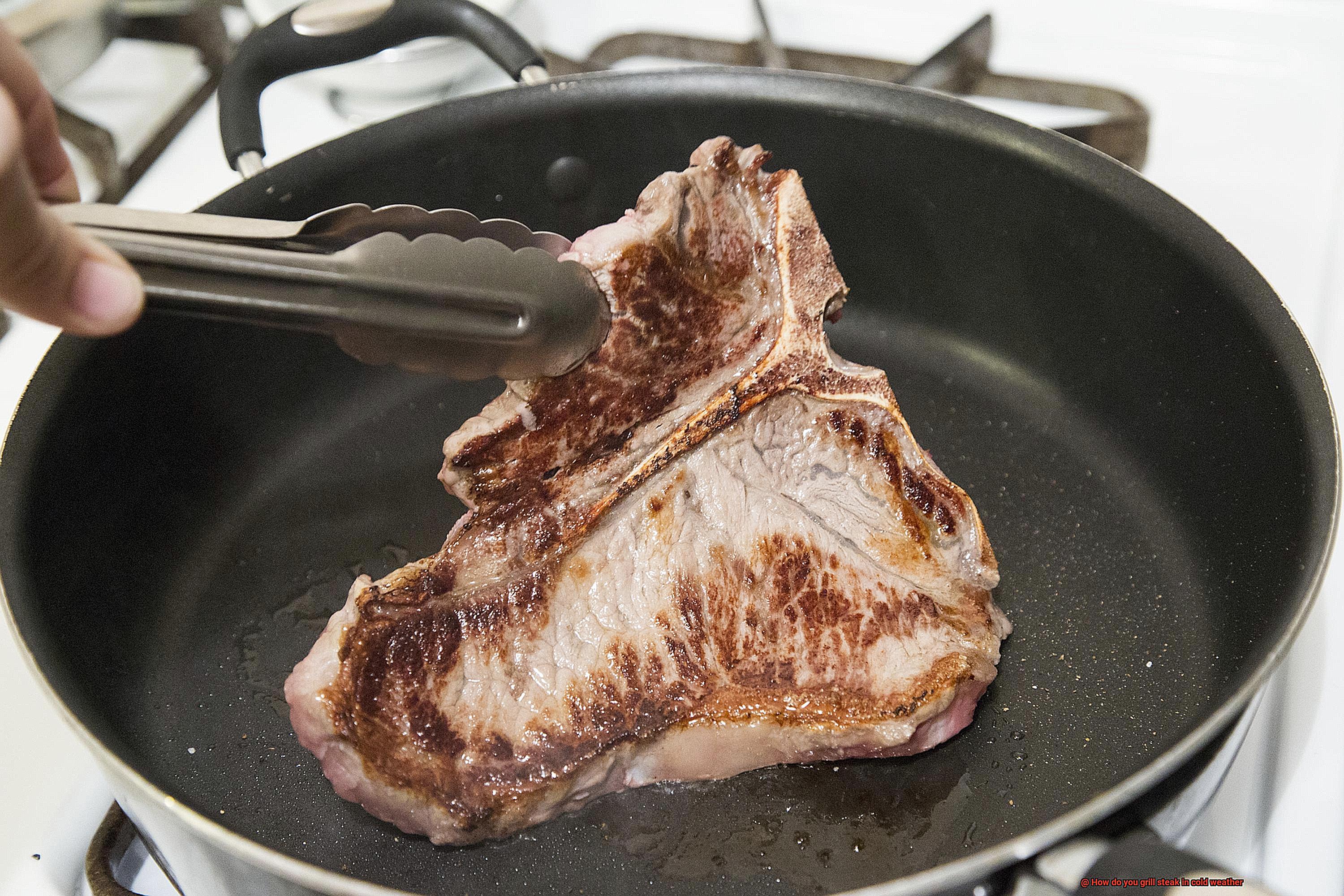
Consider Wind Speed and Direction
Then don’t let the wind be the final nail in the coffin. Wind speed and direction are vital factors to consider when grilling in cold weather. Unchecked, it can affect your grill’s temperature, cause uneven cooking, or worse-extinguish your flames.
But with a little bit of planning and some know-how, you can overcome this challenge. Here are some tips to ensure that your steak is cooked to perfection even in the brisk winter months:
- Position Your Grill in a Sheltered Area or Use a Windbreak: The location of your grill is key. Set it up in an area that is protected from wind gusts. If that’s not possible, use a windbreak to minimize the impact of wind.
- Adjust Your Vents: The vents on your grill can help regulate temperature and prevent hot spots caused by sudden gusts of wind. Make sure they’re set appropriately before grilling.
- Use a Lid: Using a lid on your grill can help trap heat and maintain a consistent temperature. It will also prevent flare-ups caused by wind blowing flames around.
- Monitor Your Grill Closely: Keep an eye on your grill and adjust cooking times as needed based on wind conditions. A strong gust of wind can quickly raise or lower the temperature of your grill, so it’s important to be attentive and make adjustments as necessary.
Use a Heat Shield or Reflector Plate
As winter descends upon us, it can be tough to brave the cold and fire up the grill for a juicy steak. But with the help of a heat shield or reflector plate, you can grill like a pro all year round.
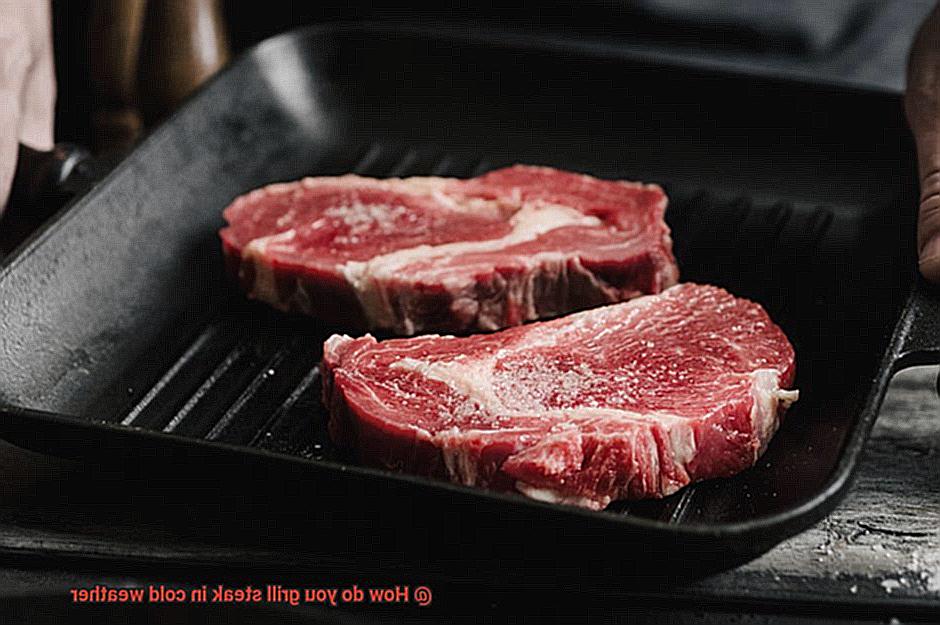
Let’s take a closer look at these nifty tools. A heat shield made of metal sits above the burner and deflects heat, distributing it more evenly across the grill. This means your steak will cook consistently without any pesky cold spots. On the other hand, a reflector plate placed beneath the cooking grate reflects heat back up towards your steak, maintaining a higher temperature on the grill and preventing heat from escaping into the chilly air.
To make sure you get the most out of your heat shield or reflector plate, it’s important to position them correctly. The heat shield should be placed about two inches above the burner, while the reflector plate should lie directly beneath the cooking grate. Preheat your grill thoroughly before adding your steak to ensure even cooking and perfect doneness.
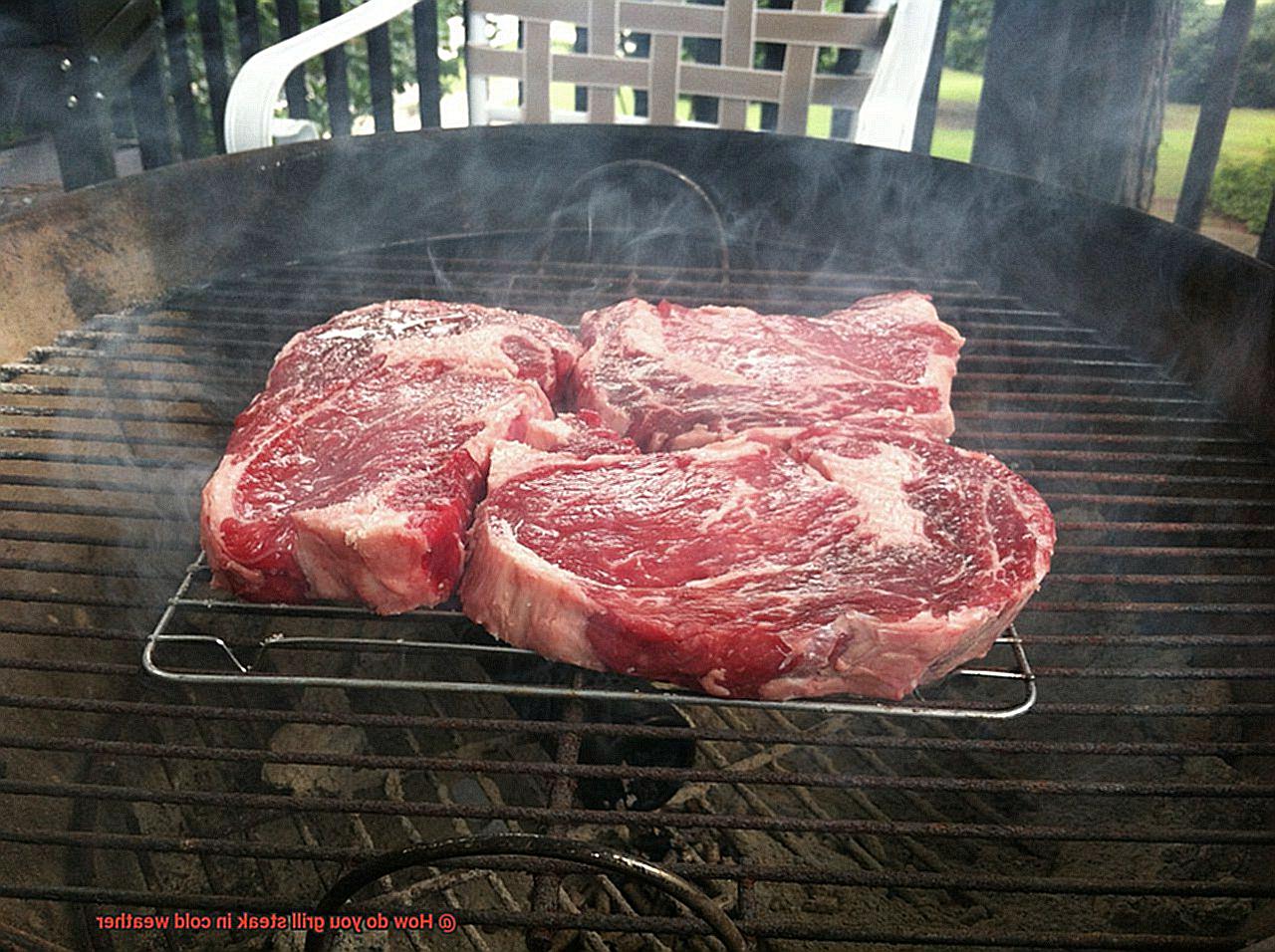
But that’s not all there is to grilling in cold weather. Keep your grill clean and well-maintained to prevent blockages that could affect airflow and cooking temperature. And for those who are particular about their steak’s level of doneness, use a meat thermometer to ensure your steak is cooked just how you like it.
Choose the Right Fuel Source
Grilling steak in cold weather can be a challenging task, but with the right fuel source, you can achieve a mouth-watering steak that will warm you up from the inside out. When it comes to choosing the right fuel source, it’s not just about taste but also about temperature and cooking time. Let’s explore the advantages and disadvantages of using propane gas, charcoal, and wood as fuel sources for grilling steak in cold weather.
Propane gas is a popular choice for grilling in cold weather because it’s easy to use and provides consistent heat. However, it’s crucial to keep in mind that propane tanks can lose pressure in colder temperatures. To prevent this from happening, ensure that your tank stays warm before and during use by storing it in a warm place or wrapping it with an insulating blanket.
Charcoal is another option that can provide a smokier flavor to your steak. However, lighting and maintaining a consistent temperature with charcoal can be more challenging in cold weather. To ensure even heat distribution, you may need to use more charcoal than usual or use a chimney starter. But if you’re willing to put in the extra effort, the smoky flavor of charcoal-grilled steak is worth it.
Lastly, using wood as a fuel source can provide a unique flavor profile to your steak. However, using wood requires more skill and attention to maintain a consistent temperature. It may also take longer to reach the desired temperature when using wood compared to gas or charcoal. But if you’re up for the challenge, wood-grilled steak can be an extraordinary and rewarding experience.
In conclusion, choosing the right fuel source comes down to personal preference and experience. Experimenting with different types of fuel sources is essential to determine which one works best for you in cold weather conditions. Whether you choose propane gas, charcoal, or wood, always preheat your grill thoroughly and use a meat thermometer to ensure your steak is cooked to perfection. So if you’re feeling adventurous, brave the cold weather and fire up that grill – your taste buds will thank you.
Cook at Lower Temperatures for Longer Periods of Time
Grilling steak in the cold can be an adventure, but it requires some special techniques to get it right. To ensure that your steak is evenly cooked and delicious, it’s essential to adjust your cooking temperature and time by cooking at lower temperatures for longer periods of time.
Firstly, preheat your grill to a lower temperature than you typically would. This will give your grill more time to warm up, preventing your steak from burning on the outside while remaining raw on the inside. A good rule of thumb is to preheat to around 350 degrees Fahrenheit instead of the usual 450 degrees Fahrenheit.
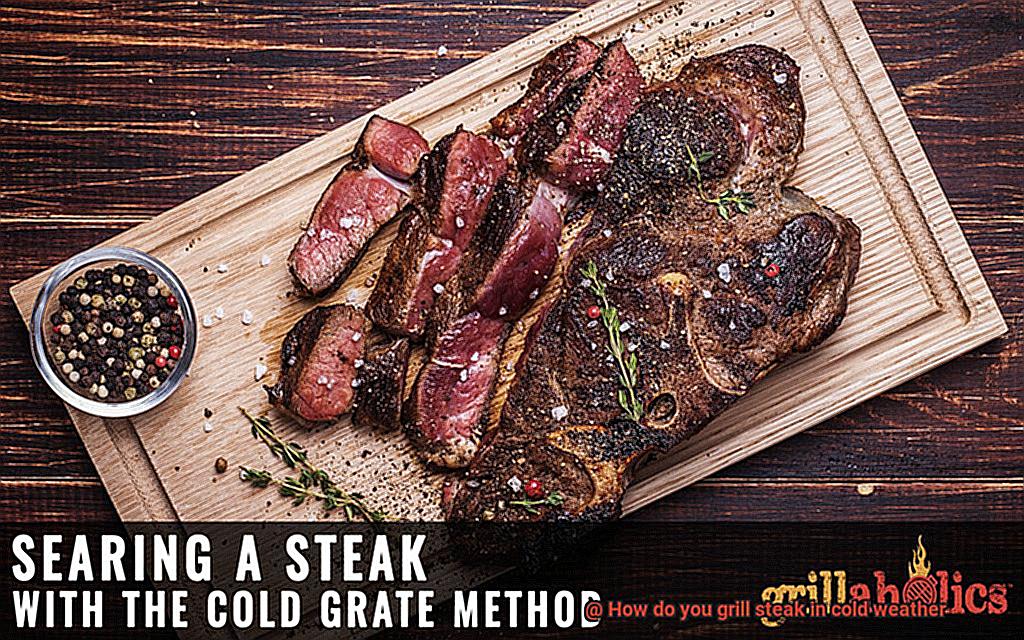
Once your grill is preheated, place your steaks on the grates and close the lid. Keep an eye on the internal temperature of the steak with a meat thermometer and aim for a temperature of around 135-140 degrees Fahrenheit for medium-rare doneness. Cooking for a longer period of time than usual will ensure that the heat has penetrated deep into the meat, making it tender and juicy.
To maintain a consistent temperature inside the grill, keep the lid closed as much as possible during cooking. Opening it frequently can cause heat to escape and prolong cooking times. Additionally, incorporating meat marinades or rubs can add flavor and moisture to your steak, keeping it juicy and delicious.
For an even better experience, try using a cast iron skillet or griddle on your grill. These tools will help retain heat and provide a more consistent cooking surface, ensuring that your steak is cooked evenly.
Let the Steak Rest Before Serving
Grilling the perfect steak in cold weather requires more attention to detail, especially when it comes to letting the steak rest before serving. As an expert in the field, I can attest to the importance of this crucial step.
Why is letting your steak rest before serving essential? Well, it allows the juices to redistribute throughout the meat, creating an even distribution of flavors and moisture. This process ensures that your steak is tender, juicy, and bursting with flavor. In colder weather conditions, resting your steak correctly becomes even more critical as the steak loses heat faster and can become dry if not rested properly.
To rest your steak correctly, remove it from the grill and place it on a cutting board. Tent a piece of aluminum foil over it to keep it warm while it rests. The amount of time you let the steak rest will depend on its thickness and how well done you want it to be. A thicker steak needs at least 5-10 minutes of rest time, while a thinner one can rest for 2-3 minutes.
While your steak is resting, take the opportunity to prepare any additional side dishes or toppings for your meal. Once the steak has rested for the appropriate amount of time, use a sharp knife to slice it against the grain into thin pieces. This will help make it more tender and easier to chew.
Finally, serve your perfectly cooked and rested steak immediately while it is still warm and juicy. Your taste buds will thank you for taking this extra step.
EWKUELiuOx8″ >
Also Read: How long can pork sit out warm?
Conclusion
In conclusion, don’t let the cold weather stop you from enjoying a perfectly grilled steak. With the right techniques and equipment, grilling in chilly temperatures can be a rewarding experience. To start, preheat your grill and choose the right fuel source to ensure even cooking. A high-quality meat thermometer is essential for achieving perfect doneness, while keeping the grill lid closed helps retain moisture and maintain a consistent temperature. Don’t forget to consider wind speed and direction to prevent uneven cooking or extinguishing flames.
Cooking at lower temperatures for longer periods of time allows heat to penetrate deep into the meat, resulting in tender and juicy steaks. And when it comes to serving your masterpiece, remember to let it rest before slicing to allow juices to redistribute throughout the meat.
So bundle up, grab those tongs, and embrace the adventure of grilling steak in cold weather. Impress your friends and family with these tips and tricks that will have them raving about your skills all winter long. Remember, experimentation is key – try out different techniques and equipment until you find what works best for you.

